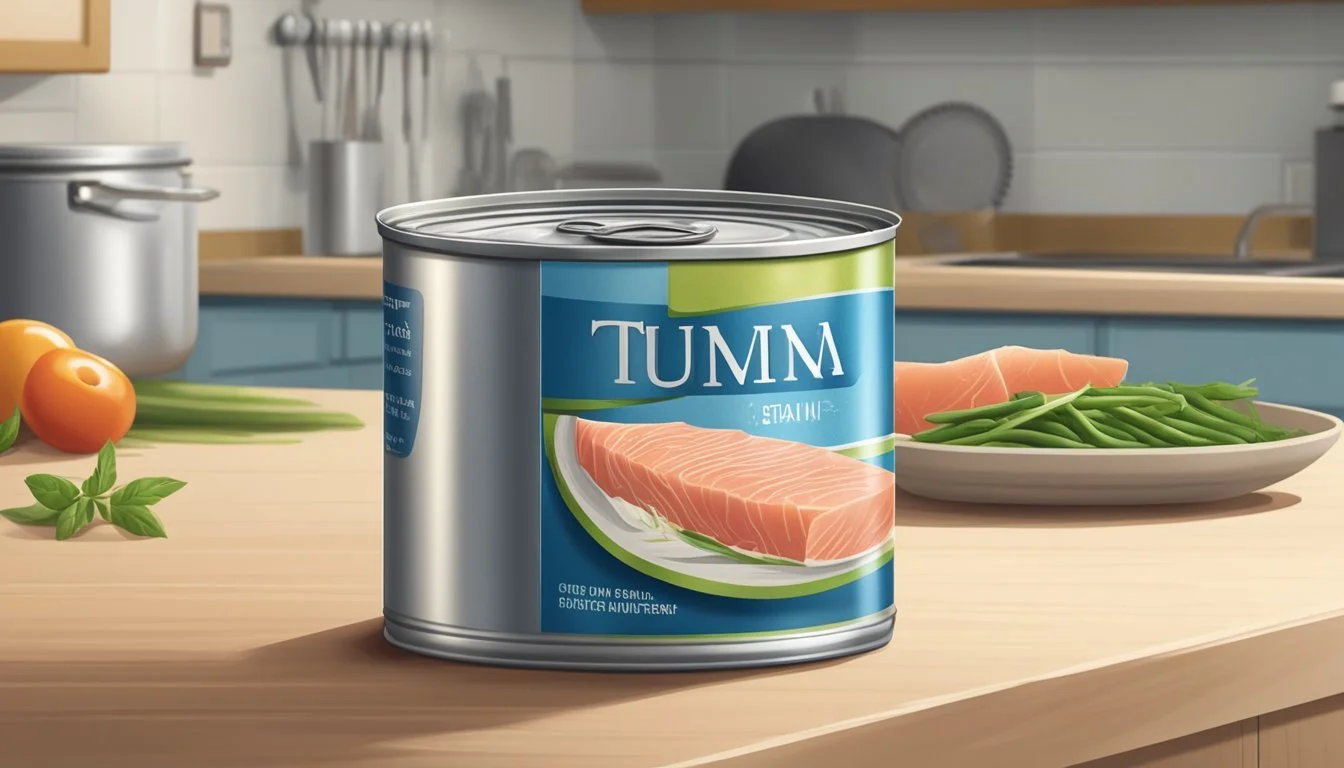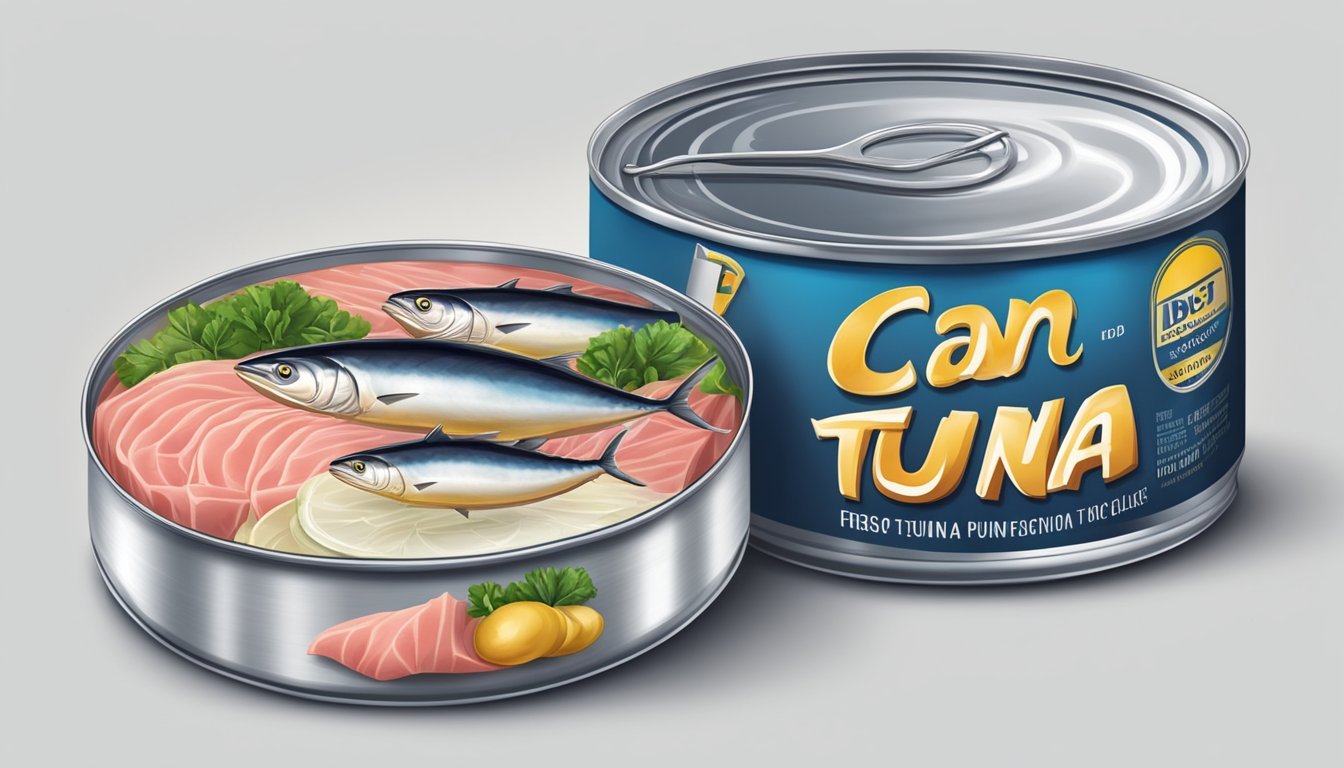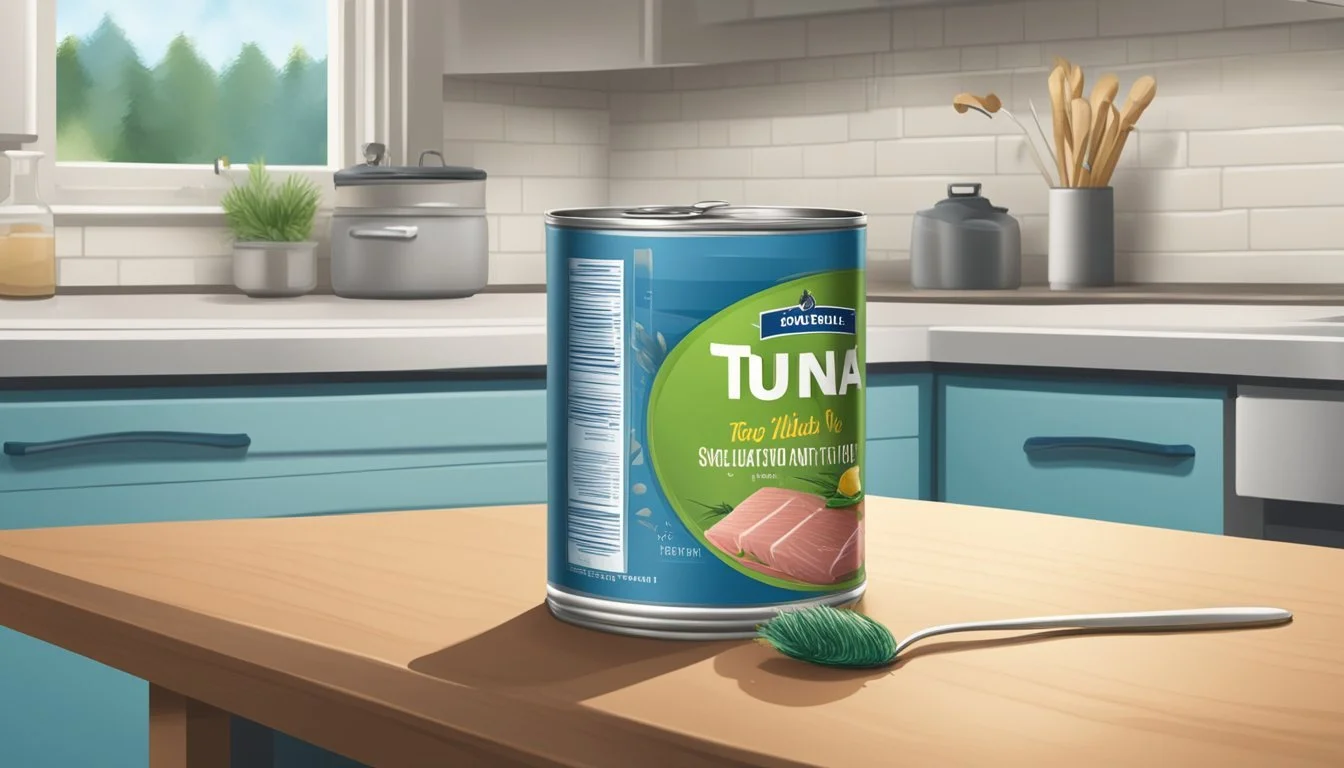Does Tuna Go Bad?
Understanding Shelf Life and Spoilage Signs
Tuna, whether fresh or canned, is a popular seafood choice known for its rich protein content and nutritional benefits, including the presence of omega-3 fatty acids and vitamin D. Highly regarded for its versatility in the kitchen, tuna can be incorporated into a variety of dishes. The healthful properties of tuna contribute to heart health and make it a valuable part of a balanced diet.
When it comes to canned tuna, consumers often find it to be a convenient and long-lasting option. Canned tuna has a relatively long shelf life due to the canning process that preserves its quality. Stored properly in a cool, dry place, canned tuna typically remains safe for consumption for years, which can extend well beyond the printed 'best by' dates on the packaging.
However, like all perishable foods, tuna can go bad, and it is important to recognize the signs. Spoilage of canned tuna can occur due to factors such as poor canning practices, compromised packaging, or improper storage conditions. Once a can of tuna is opened, it should be handled carefully. The contents should be transferred to an airtight container if not used immediately and refrigerated to ensure that the nutritional qualities remain intact and to prevent bacterial growth.
Identification of Tuna Spoilage
When assessing whether tuna, either raw or canned, has spoiled, consumers can conduct a sensory evaluation to determine its quality and safety. Two primary assessments – olfactory (smell) and visual – offer tangible indicators of spoilage.
Smell: Fresh tuna should have a mild, salty ocean scent. When spoiled, both raw and canned tuna emit a foul odor that is sharp and unpleasant. A rancid or sour smell is a clear indication that the tuna is no longer good to eat.
Visual Inspection: The color of fresh raw tuna ranges from pink to a deep red. Discoloration, such as a dull appearance or a brown color, can signal spoilage. Canned tuna, typically pale pink or light brown, should be consistent in color. If one sees dark spots or an overall grayish tone, this could suggest degradation.
Texture: A further method to assess tuna is by texture. Fresh tuna should be firm to the touch, not mushy or slimy. If the surface of the tuna is sticky or if there is an excessive amount of liquid in the can, this may indicate spoilage.
To summarize, when checking for spoilage, trust one's senses. If the tuna has a strong, off-putting odor or if the appearance and texture raise concerns, it is best to err on the side of caution and avoid consumption.
Understanding Canned Tuna
Canned tuna is a convenient protein source, but its longevity and safety depend on proper storage and handling.
Types of Canned Tuna
Canned tuna comes in several types, notably albacore (white tuna), skipjack, yellowfin, and light tuna. The meat is either packed in oil or water, which can affect taste and texture.
Shelf Life and Expiration
The shelf life of unopened canned tuna typically extends beyond the expiration date on the can. However, once opened, the canned tuna shelf life decreases to about 2-3 days when properly stored in the refrigerator.
Storage Recommendations
To maintain quality, store unopened cans in a cool, dry place away from direct sunlight. Opened tuna should be transferred to an air-tight container and refrigerated promptly.
Signs of a Compromised Can
Be cautious of cans with visible dents, rust, or damage. A bulging or leaking can indicates gas production from bacteria, making the tuna unsafe to consume.
Health Risks and Safety
Consuming spoiled tuna poses food safety risks, including food poisoning. Also, be mindful of mercury content, especially when pregnant or serving to children, to prevent mercury poisoning.
Choosing and Eating Canned Tuna
For safe consumption, choose cans that are free from damage and store them according to guidelines. Note that canned tuna is more affordable than fresh and can be included in a variety of dishes.
Nutritional Value of Tuna
Canned tuna is a rich source of protein, omega-3 fatty acids, vitamins, and other nutrients, offering significant nutritional benefits.
Preparation and Usage Tips
Maximize freshness and taste by using canned tuna in salads, pasta, or as part of a main dish soon after opening. Store leftovers in the refrigerator and consume quickly to maintain safety and quality.
Handling Fresh Tuna
When handling fresh tuna, it is crucial to recognize freshness indicators and understand appropriate storage methods to prevent spoilage. Knowing the signs of spoilage and maintaining safe consumption practices are key to avoiding health risks.
Freshness Indicators
Visual Inspection: Fresh tuna should have a bright, light pink to deep red color without any discoloration or dark spots. Its flesh must be firm to the touch.
Olfactory Test: It should emit a mild, ocean-like smell. A foul odor or strong fishy smell indicates it's no longer fresh.
Storage and Shelf Life
Refrigeration: Fresh tuna should be stored in the refrigerator immediately upon purchase. It should rest on ice and be placed in the coldest part of the fridge.
Shelf Life: When stored properly, fresh tuna can have a shelf life of up to 48 hours in the refrigerator.
Spoilage Signs in Fresh Tuna
Odor: A strong, unpleasant smell is a clear sign of spoilage.
Appearance: Look for any mold, growth, or changes in color, such as greyish hue or slime, on the tuna's surface.
Preventing Tuna Spoilage
Reducing Moisture: Pat the tuna dry before refrigeration to reduce moisture which can expedite spoilage.
Proper Storage: Always store tuna in a clean, airtight container to minimize exposure to air and moisture.
Consumption Safety
Sensory Evaluation: Before consumption, always check the tuna with your senses for any signs of spoilage to prevent health risks.
Health Risks: Consuming spoiled tuna can lead to food poisoning, with symptoms such as vomiting and other gastrointestinal distress.
Tips for Storing Tuna
Storing tuna correctly is essential to maintain its quality and safety. Here are several guidelines for properly storing both fresh and canned tuna:
Fresh Tuna: Fresh tuna should be refrigerated immediately upon arriving home. It is best to keep it at temperatures between 35°F (1.7°C) and 40°F (4.4°C). It should be consumed within 1-2 days. If longer storage is needed, one should wrap the tuna well and freeze it, where it can remain for up to 6 months.
Canned Tuna (Unopened): Store unopened cans in a cool, dry place such as a pantry or cupboard, away from heat sources or moisture. Under these conditions, canned tuna can last between three to five years.
Canned Tuna (Opened): Once opened, leftover tuna should not be stored in the can. Instead, they should transfer the tuna to an airtight container and place it in the refrigerator. Consume the leftovers within 2-3 days of opening.
Freezing Tuna: When freezing fresh tuna, preserve its texture and taste by wrapping it tightly in plastic wrap or aluminum foil, and place it in a freezer bag, removing all air before sealing.
Disposal: If the tuna has a strong odor, a slimy texture, or discoloration, it should be disposed of, as these are signs of spoilage.
Here’s a quick reference table:
Storage Type Location Temperature Range Shelf Life Fresh Tuna Refrigerator 35°F - 40°F 1-2 days Canned Tuna (Unopened) Pantry Room Temperature 3-5 years Canned Tuna (Opened) Refrigerator 35°F - 40°F 2-3 days Fresh Tuna (Frozen) Freezer 0°F (-18°C) or below 6 months
By following these storage tips, individuals will ensure the longevity and safety of their tuna, whether fresh or canned.
Recognizing and Responding to Spoilage
When dealing with canned tuna, it's crucial to recognize signs of spoilage to ensure food safety. Canned tuna, like other seafood, can spoil due to factors such as improper storage or contamination.
Visual and Olfactory Signs of Spoiled Tuna
Spoiled tuna typically exhibits distinct visual and olfactory cues:
Discoloration: Fresh tuna should have a pinkish or light brown color. If there are spots of discoloration or if the fish appears dull and gray, it may indicate spoilage.
Foul Odor: An off-smell is a clear sign that the canned tuna has gone bad. Tuna should have a mild sea-like smell. A pungent or off-putting odor suggests bacterial growth.
Contamination and Mold
Growth or Mold: Any visible signs of mold or fungal growth on the tuna suggest contamination and spoilage. Consumers should never eat tuna that shows signs of mold, as it may represent a health hazard.
Food Safety and Response
Disposal: Upon identifying any signs of spoilage, one must dispose of the canned tuna to prevent the risk of foodborne illness.
Types of Canned Tuna: There are different types of canned tuna, such as light and white tuna; however, all types can spoil under the same conditions of heat, moisture, and time.
Consumers should always check for spoilage prior to consumption and err on the side of caution by disposing of any food product that exhibits these signs.
Conclusion
Storing canned tuna properly is key to ensuring its longevity and maintaining its nutritional benefits. It's recommended to keep unopened cans in a cool, dry place, and once opened, the tuna should be placed in an airtight container and refrigerated to be consumed within 2-3 days.
Storage Location Duration Unopened Pantry Until expiry Opened Refrigerator 2-3 days
The risk of spoilage increases with improper storage. Consumers can identify spoiled tuna by checking the best-by date, observing for any bulging of the can, and noting any off-putting odors. Tuna should possess a fresh scent; any rancid or sour smell indicates spoilage.
Properly stored canned tuna provides a source of omega-3 fatty acids, essential for heart health, with a practical advantage due to its extended shelf life. It's low in fat and calories when compared to other protein sources, making it a beneficial addition to a balanced diet.
In terms of food safety, consuming spoiled tuna can pose health risks. Hence, vigilance in checking the quality of canned tuna before consumption is crucial. Remember, when in doubt, it's safer to dispose of any canned food that seems compromised.
By adhering to these guidelines, individuals can enjoy the nutritional value of canned tuna while minimizing food safety concerns.






